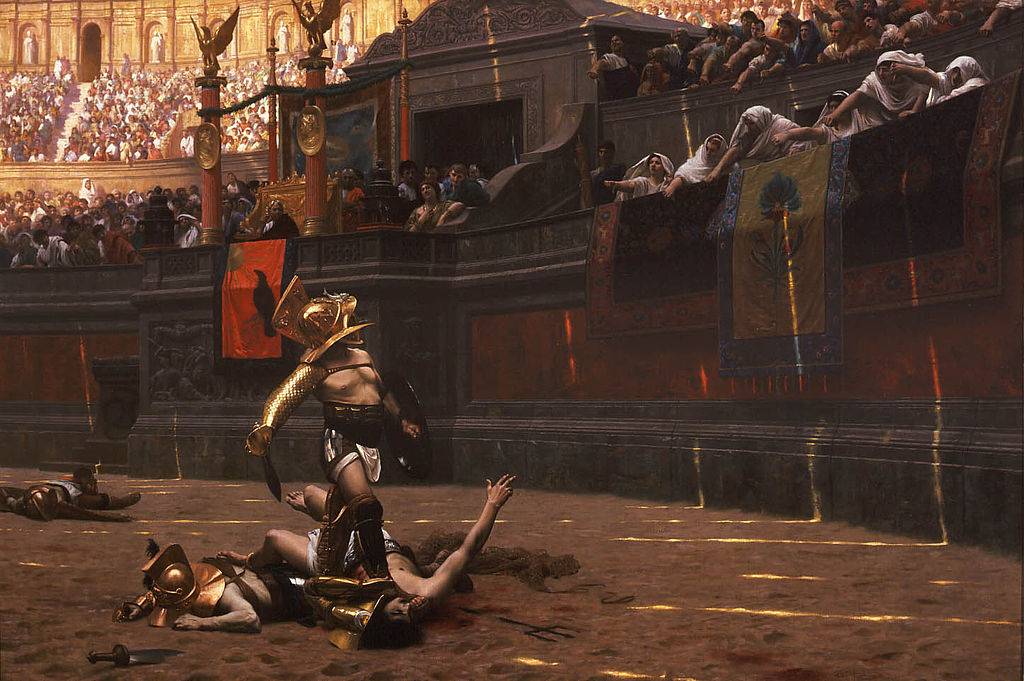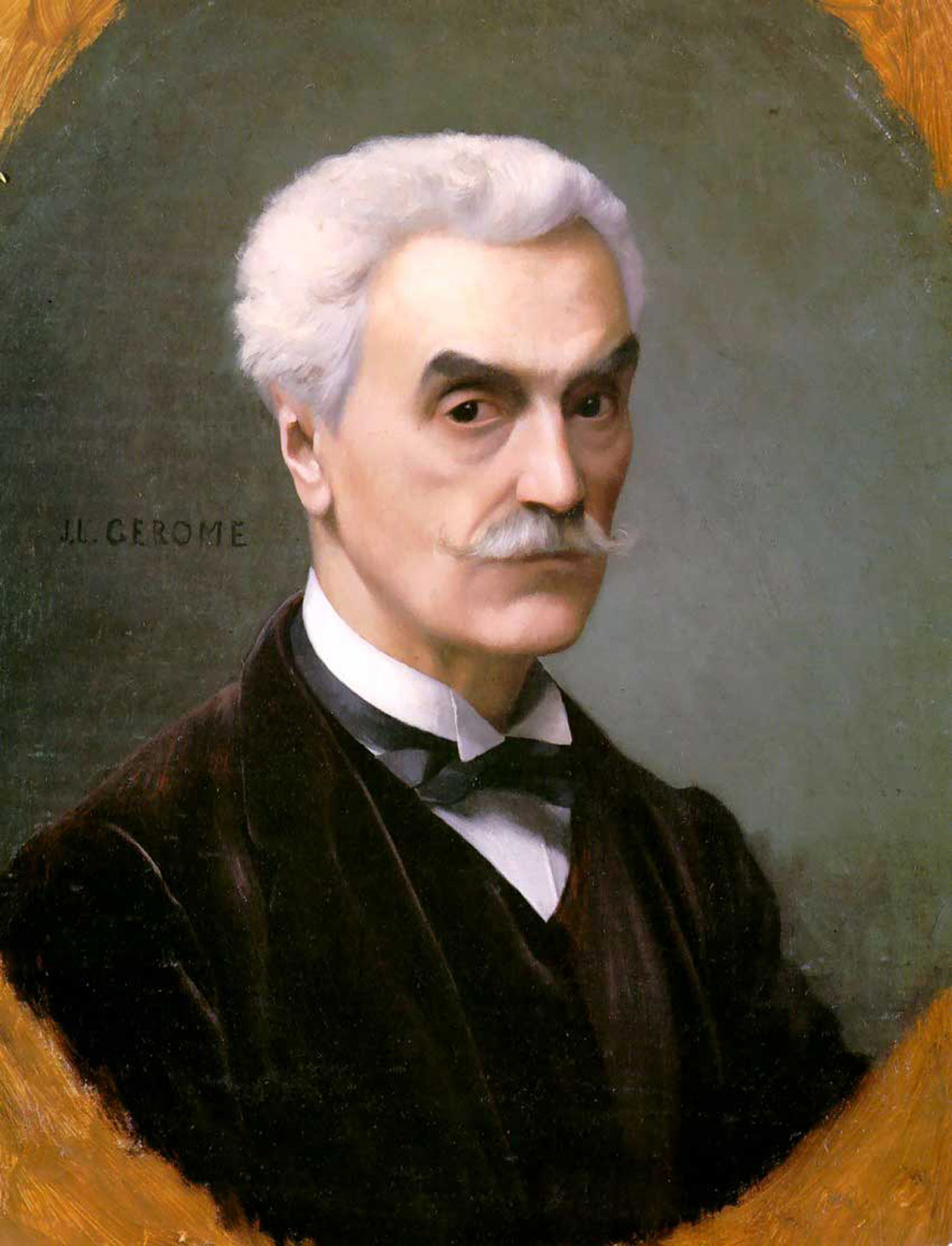Pollice Verso (Latin: with a turned thumb) is a painting featuring the eponymous Roman gesture directed to the winning gladiators. The gesture on the painting is given by the Vestals to the victorious secutor, awaiting the decision on the beaten retiarius at Colosseum. The painting inspired the 2000 film Gladiator, where Commodus holds out a raised thumb to spare Maximus. Apart from the gladiators and Vestals, the picture shows the emperor in his box. Gérôme deliberately used light and perspective to depict some features. The blend of voyeurism and a sense of moral superiority is a specific 19th-century feature. Gérôme's depiction of the Colosseum's architecture is based on accurate drawings and the armor worn by the gladiators follows the design of those found in Pompeii. Gérôme also consulted written sources to maintain archaeological accuracy. Some Latin textbooks used Pollice Verso to illustrate Roman customs. The producers of Gladiator showed Ridley Scott a reproduction of Pollice Verso before he read the film script. "That image spoke to me of the Roman Empire in all its glory and wickedness. I knew right then and there I was hooked", said Scott. However, it was found that the secutor's armour was not accurately portrayed.




Pollice Verso
oil on canvas • 96.5 cm × 149.2 cm
 Jean-Léon Gérôme
Jean-Léon Gérôme